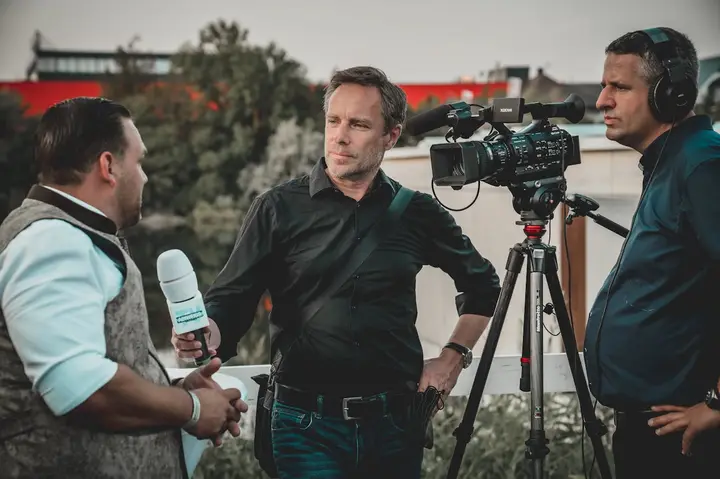The Paradox of Progress: Fritz Haber's Legacy
Posted by: sunxin in Science 4 months ago
In the annals of science, there are few stories as compelling and paradoxical as that of Fritz Haber. The 1918 Nobel Prize for Chemistry, awarded to this German scientist, is often cited as the most significant Nobel Prize in history. His groundbreaking invention has literally shaped the world we live in, sustaining the lives of over four billion people. Yet, the same man's peers shunned him, and his name is steeped in controversy. How did one individual's work simultaneously become a beacon of hope and a symbol of tragedy?
The Unseen Geometry of the Universe
Posted by: sunxin in Science 4 months ago
The fabric of the universe is a tapestry woven with the threads of mathematics, a language that has the power to unravel the mysteries of our cosmos. In this exploration, we delve into the heart of geometric inquiry, a quest that began with the musings of ancient scholars and led to the revelation of the very shape of our cosmos.
The Holographic Wormhole Hoax: Unraveling the Truth Behind the Quantum Leap
Posted by: sunxin in Science 4 months ago
In the world of science, every now and then, a story comes along that captivates the imagination and sends ripples through the media. On December 1st, 2022, such a story emerged when the journal "Nature" published a cover story about a holographic wormhole created inside a quantum computer. It was a tale that promised to explore the intersection of quantum mechanics and gravity, igniting a frenzy of tweets and headlines. Yet, as with many groundbreaking announcements, the truth was far from what it seemed.
The Dark Secrets of Night Vision Goggles Unveiled
Posted by: sunxin in Science 4 months ago
Have you ever wondered what it would be like to step into the world's darkest room, armed with the best night vision goggles available? What if your eyes could see in the pitch dark, detecting even the faintest light? This isn't a scene from a science fiction movie; it's a reality that we explored at a Navy base in Indiana, where we put the PVS-31A night vision goggles to the ultimate test.
The Quest for Happiness: What Really Matters?
Posted by: sunxin in Science 4 months ago
Have you ever pondered what truly leads to a happy life? It's a question that has intrigued philosophers, psychologists, and everyday people alike. In this exploration, we delve into the depths of this universal query, uncovering the layers that define a fulfilling existence.
The Mechanic Marvels of Sewing Machines: Unveiling the Tiny Miracles in Every Stitch
Posted by: sunxin in Science 4 months ago
Have you ever pondered over the dance of the needle in a sewing machine? The rapid up-and-down movement, leaving a trail of stitches that seem almost magical. But have you ever wondered, "How does it actually work?" The needle never fully penetrates the fabric, yet the stitches hold firm. What's the secret behind this mechanical marvel?
The Circular Conundrum: Unraveling the Mysteries of the SAT Circle Problem
Posted by: sunxin in Science 4 months ago
In the annals of standardized testing, one question stood out from the rest, mystifying thousands of students in 1982. The question was deceptively simple, yet it stumped every single test-taker. It reads: "In the figure above, the radius of circle A is 1/3 the radius of circle B. Starting from the position shown in the figure, circle A rolls around circle B. At the end of how many revolutions of circle A will the center of the circle first reach its starting point?"
The World's Largest Earthquake Simulator: A Lifeline Against Disaster
Posted by: sunxin in Science 4 months ago
Earthquakes, those unpredictable forces of nature, have been shaping our world and claiming lives since time immemorial. But what if we could predict their impact before they strike? Enter E-Defense, the world's largest earthquake simulator, a marvel of modern engineering designed to test buildings to their limits and save lives in the process.
The Surprising Power of Cooperation in Game Theory
Posted by: sunxin in Science 4 months ago
Have you ever wondered why some nations manage to thrive while others fall into conflict? Or why, in a world full of self-interested individuals, cooperation still exists? The answers to these questions can be found in the fascinating realm of game theory, specifically through the lens of the prisoner's dilemma. In this article, we'll explore the dynamics of cooperation and conflict, and how a simple game can shed light on the complexities of real-world interactions.
The Scale of the Universe: A Humbling Perspective
Posted by: sunxin in Science 4 months ago
Have you ever paused to truly ponder the vastness of the universe? It's a topic that can make even the most seasoned科学家 seem small, but it's also one that fascinates and humbles us. Let's embark on a cosmic journey to explore the scale of the universe and the incredible dance of celestial bodies.
Recent Posts
- Tragedy Unfolds: The Heartbreaking Attack at Mogadishu's Leo Beach
- Clash in Liverpool: The Battle Between Anti-Racism and Anti-Immigration
- Tragedy Unfolds: Kerala's Heartbreaking Battle with Landslides
- Tragedy in Tarim: A Glimpse into the Aftermath of Israeli Aerial Strikes
- The Tragic Attack on Hamama School: A Story of Innocence Lost in Shik Radwan
Categories
- Official Announcement (3)
- News (1653)
- 新闻 (28)
- Technology (300)
- 科技 (235)
- 科普 (418)
- Science (409)
- 公开课 (180)
- MOOC (183)
- Business (36)
- 揭秘 (143)
- Mysteries (124)



